Service Designer
Case Handling Team at Tandem Bank
7 Months
The existing case management process at Tandem Bank was fragmented and inconsistent. When a complaint was made, agents were manually creating and tracking action plans across multiple tools including Outlook, Excel, Word, and a legacy case system. This disjointed setup led to missed or delayed actions, poor visibility of task ownership, difficulty tracing the resolution status of customer complaints, and increased complaint escalations due to unresolved or lost queries
Agents struggled to know where to direct their queries, and lacked a centralised, intuitive way to monitor progress or accountability. The high reliance on manual processes not only created inefficiencies but also posed a reputational risk for the bank when complaints were mishandled or unresolved.
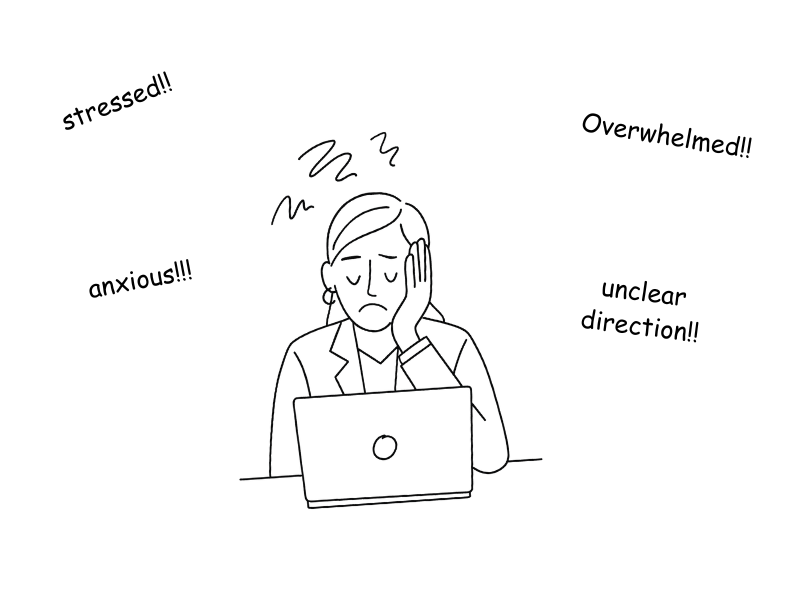
To improve service delivery and reduce complaint escalations, the bank needed a consistent, integrated way to manage and track complaints.Â
The redesigned experience aimed to streamline workflows, reduce errors, and improve customer satisfaction through better internal tools for agents and support staff.

To understand the root causes behind the inefficiencies in the complaint case management process, I worked with a junior UX designer to conduct a series of user interviews and shadowing sessions with frontline agents and team managers.
We began by shadowing complaints agents during their daily workflows. This helped us observe the fragmented nature of the process, switching between Outlook, Excel, and Word to create, track, and follow up on action plans. We witnessed firsthand how easy it was for tasks to slip through the cracks, especially without a centralised tracking method.
We also carried out in-depth interviews with agents and team managers to uncover frustrations, workarounds, and missed opportunities. Recurring pain points included, 1) difficulty in tracking who was responsible for next steps, 2) lack of visibility into whether action items were completed, 3) time wasted searching through email threads for updates or records and 4) inconsistent processes leading to errors and escalations.
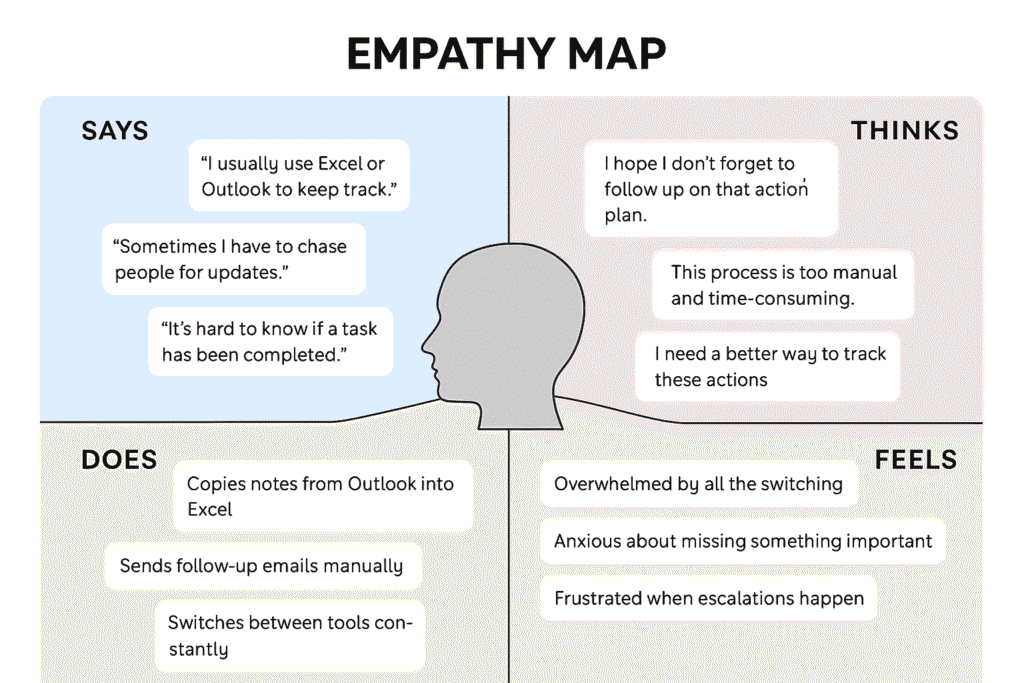
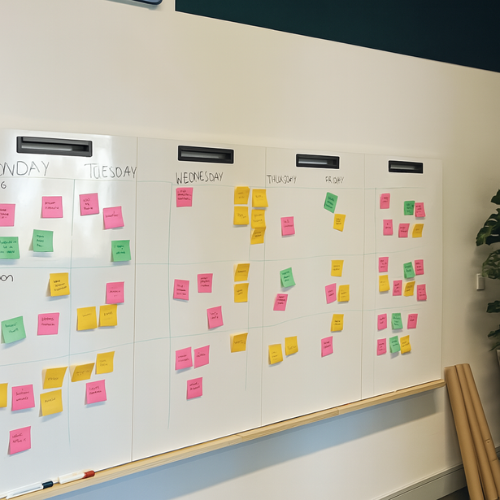

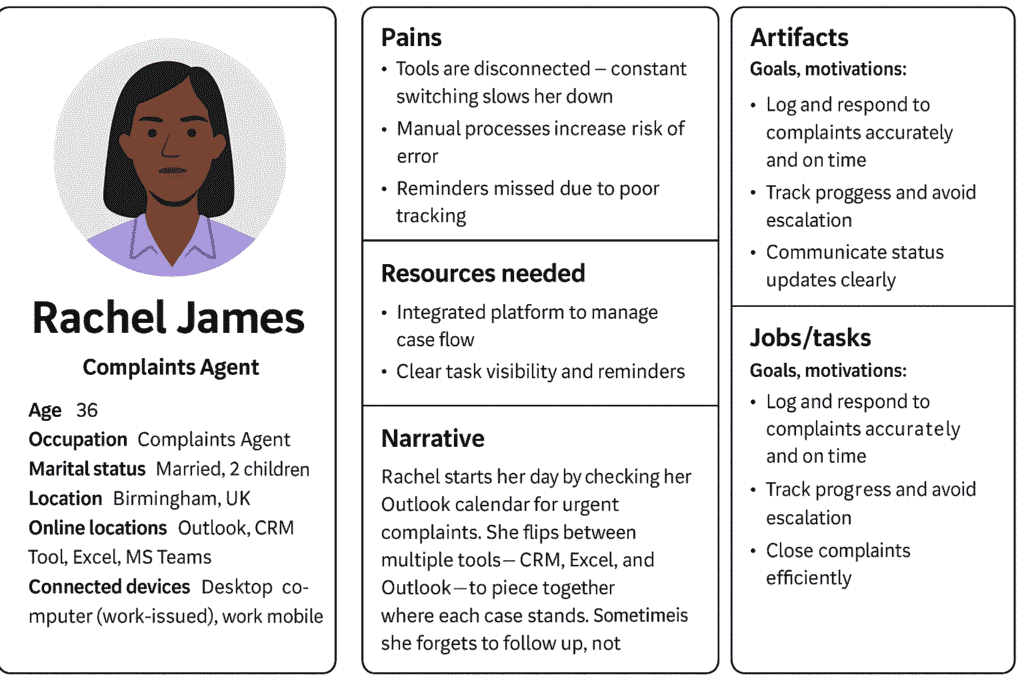
With insights gathered during discovery, we moved into the Define phase to align the team around a shared understanding of the core problem and shape a focused direction for the solution.
This phase involved collaboration between the design team (UX researcher, myself as the Senior UX & Service Designer and a Junior UX designer), and members of the scrum team including a product owner and Salesforce specialist. We facilitated joint synthesis sessions to cluster insights, prioritise pain points, and shape a clear path forward based on both user needs and technical feasibility.
These activities helped me map the current (as-is) journey and identify critical points of friction that hindered operational efficiency and impacted customer satisfaction.
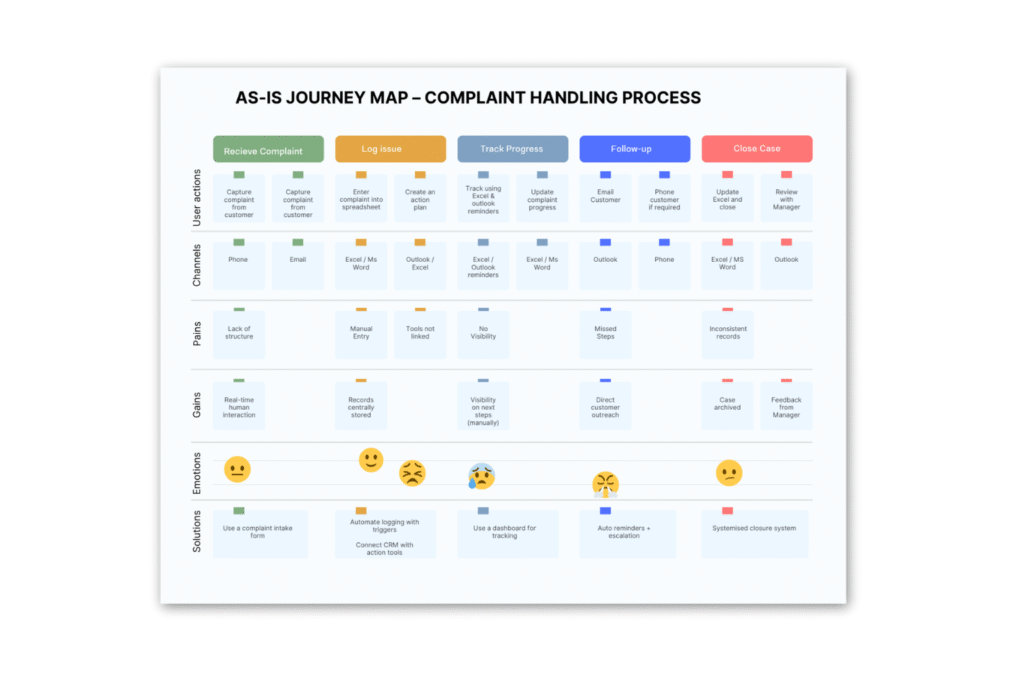
After uncovering the gaps in the existing complaints process, we moved into the ideation and co-design phase to reimagine the future-state experience. Our mission was clear: reduce delays, improve visibility, and streamline how complaints are handled, both for internal teams and customers.
I led collaborative sessions focused on envisioning a smoother and more intuitive journey. We started by mapping the desired future journey, transforming research insights and design goals into actionable stages that reflected how things should work.Â
From there, I designed the service blueprint — a structured view of every interaction, touchpoint, and internal process. I mapped how a complaint should ideally move through the system.Â
Once drafted, the blueprint was shared with stakeholders for feedback. This loop helped me refine it further, factoring in service-level expectations and technical feasibility to ensure a solution that not only made sense on paper , but worked for everyone involved.
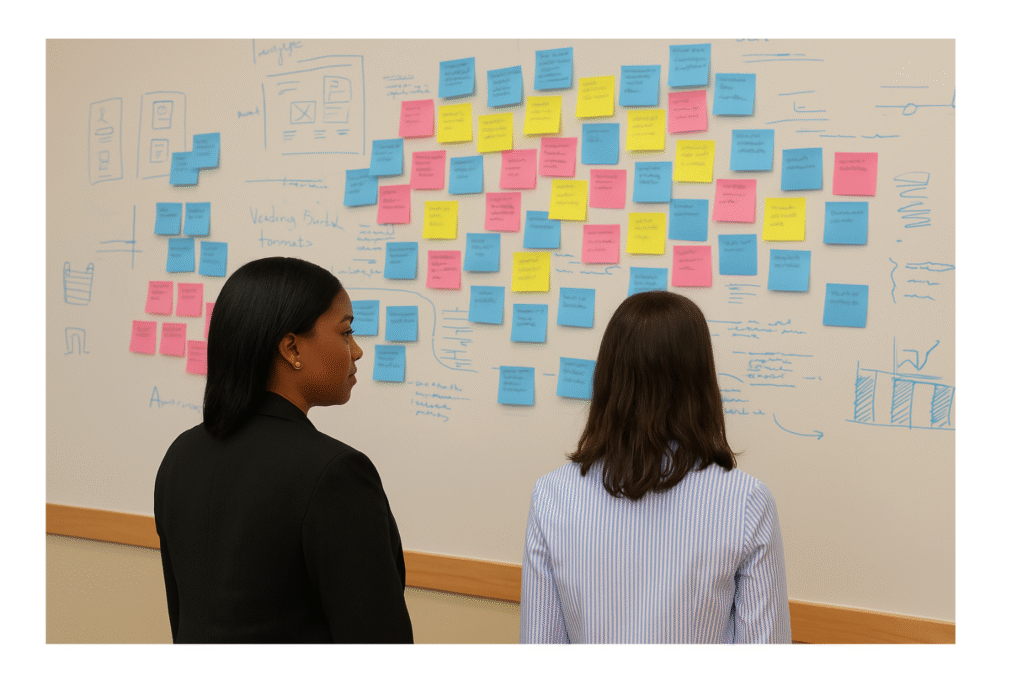
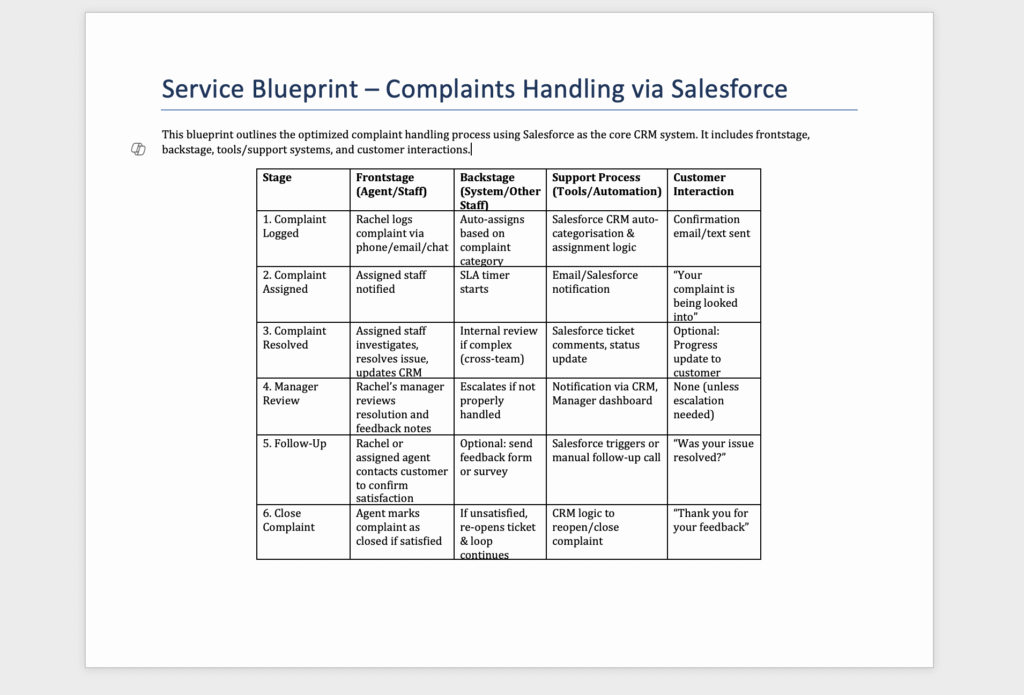
To bring our ideas to life, I designed paper sketches for key complaint screens, which were later translated into Figma prototypes. These designs went through several iterations based on team feedback to ensure alignment with user needs and internal workflows.
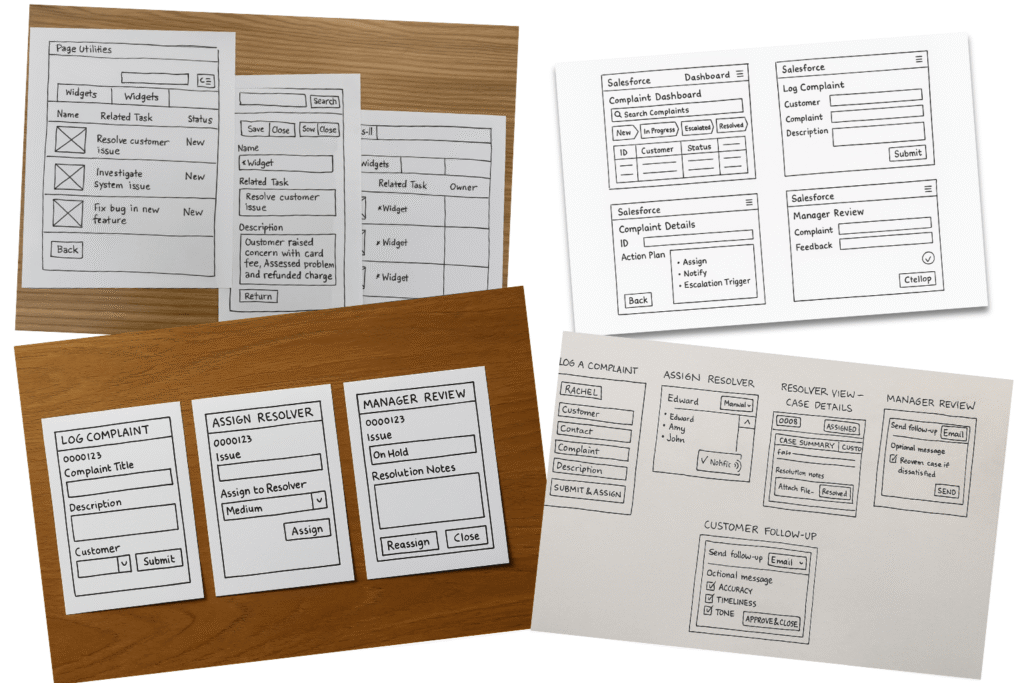
Using Salesforce Lightning Design System, I incorporated familiar UI patterns to maintain consistency. We then ran usability tests to validate our approach.
These refinements helped improve confidence in the tool, reduce friction in internal handovers, and make the resolution process easier to track from end to end.
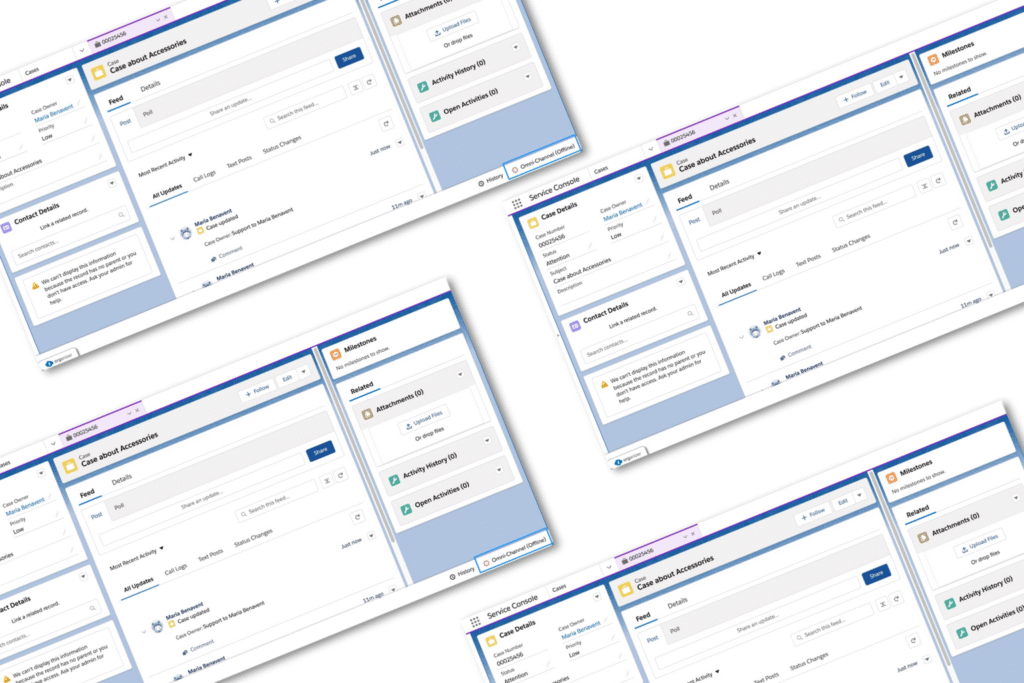
One of the biggest challenges was aligning different teams, customer service, design, and salesforce developers, around a shared vision. Each had unique priorities, which sometimes led to conflicting feedback or delays in decision-making.
Another challenge was designing within the constraints of Salesforce’s Lightning Design System. While it offered consistency, it limited flexibility in UI patterns, requiring creative problem-solving to meet user needs without deviating from system standards.
Through this project, I learned the importance of:
